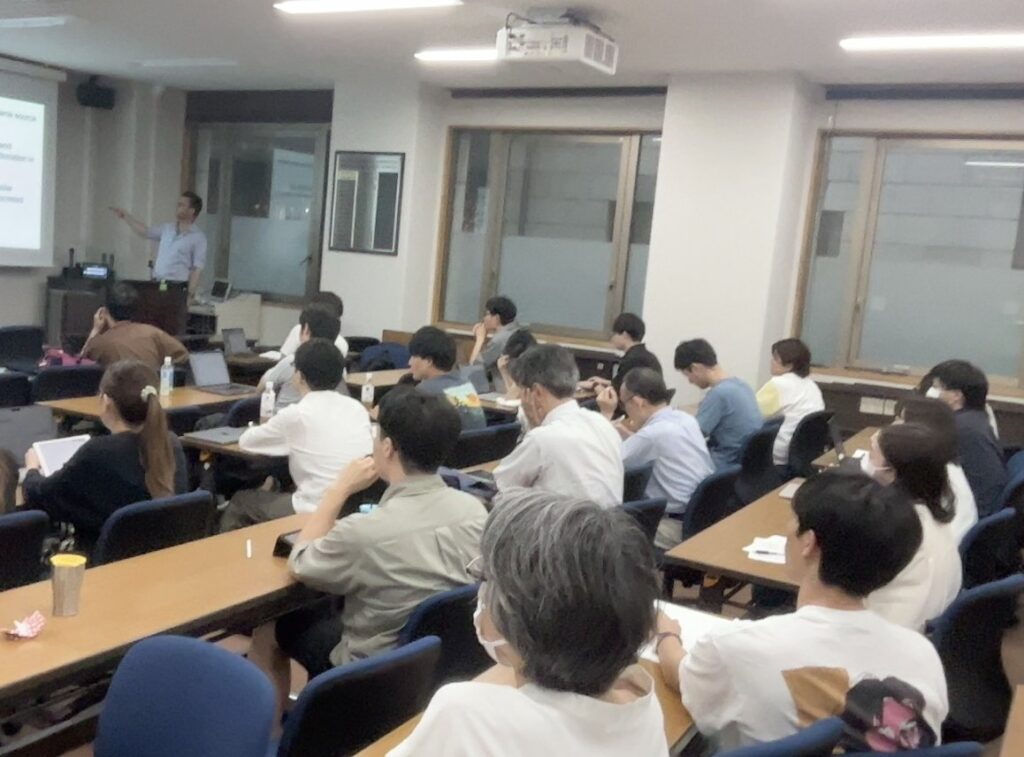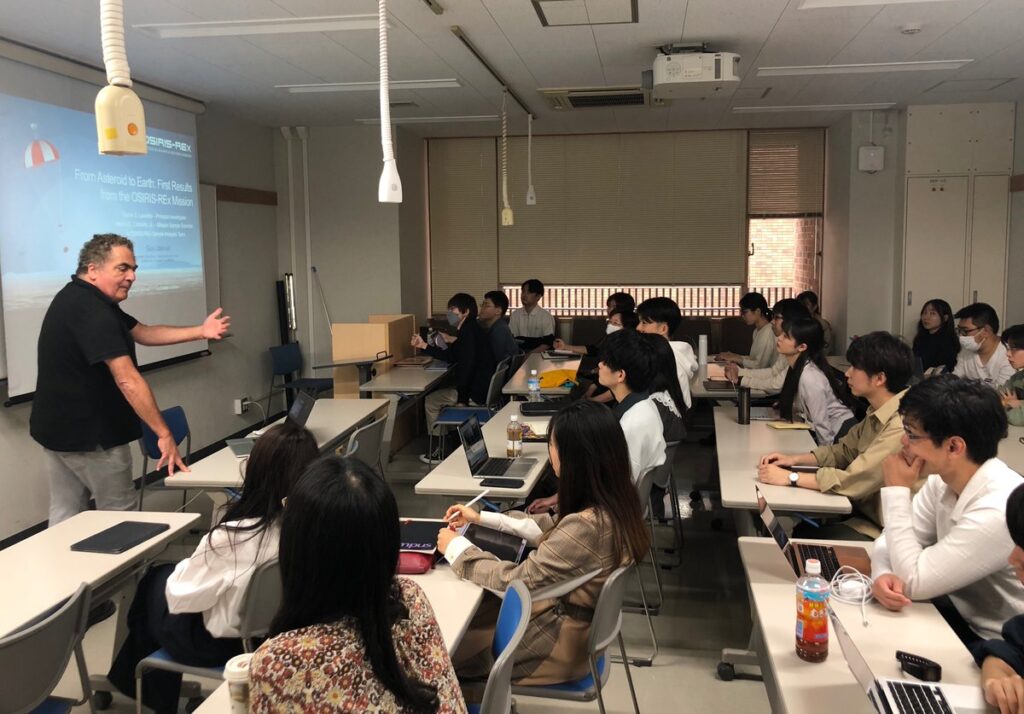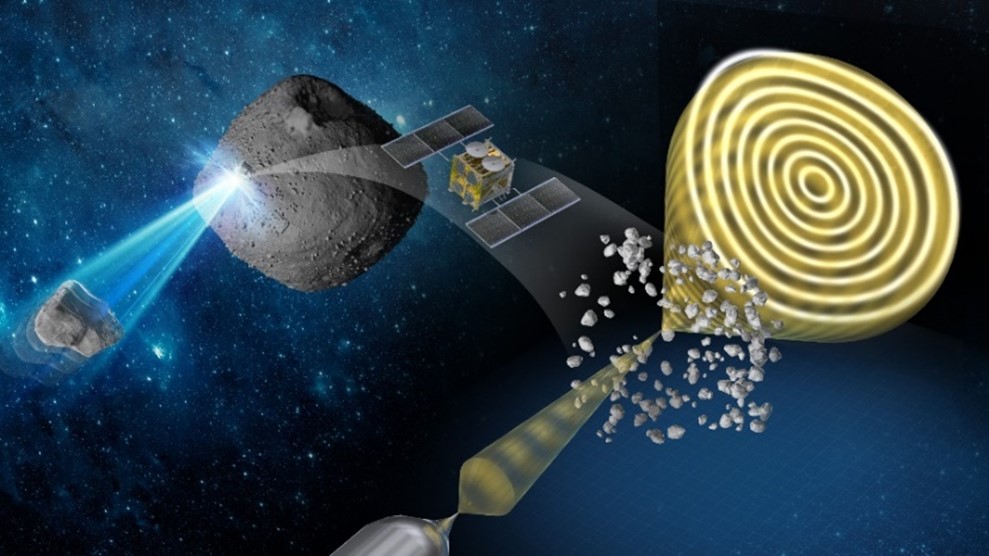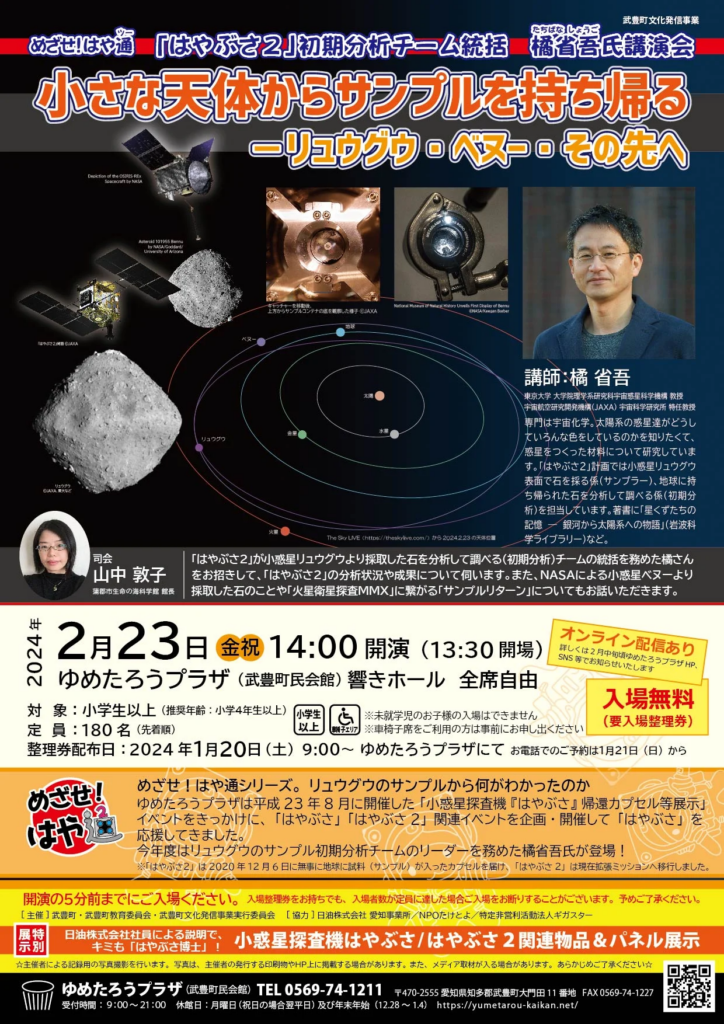Joint Press Release
Shogo Tachibana (Professor, UTOPS, Department of Earth and Planetary Science, ISAS)
An international research group led by Senior Scientist Yoshinori Takano of the Japan Agency for Marine-Earth Science and Technology (JAMSTEC), Professor Hiroshi Naraoka of Kyushu University, and Principal Investigator Jason Dworkin of the National Aeronautics and Space Administration (NASA), along with researchers from Keio University, Human Metabolome Technologies, Hokkaido University, Tohoku University, Hiroshima University, Nagoya University, Kyoto University, the University of Tokyo, extracted soluble components in samples from the asteroid Ryugu and performed precise chemical analysis. A total of 84 diverse organic acids (including newly discovered monocarboxylic, dicarboxylic, tricarboxylic, and hydroxy acids) and nitrogen-containing compounds with a high affinity for water were identified, providing conclusive evidence for the current state of chemical evolution and water quality metamorphism (Figure). These include oxalic acid, citric acid, malic acid, pyruvic acid, pyruvic acid, lactic acid, mevalonic acid, and others, as well as a group of alkylurea molecules, an organic-inorganic complex, revealing the origin of chemical evolution dominated only by physical and chemical factors. We then summarized the light element composition (carbon, nitrogen, hydrogen, oxygen, and sulfur) and organic material science properties, including stable isotope composition, molecular composition, and content, of the organic matter at the two touchdown sampling sites.
These results provide primary information on the chemical evolution of the early solar system and are important for understanding the larger scientific inquiry into how non-living organic molecules led to the evolutionary processes that ultimately led to the emergence of life.
This research was supported by Grant-in-Aid for Scientific Research on Innovative Areas (Grant-in-Aid for International Cooperative Research Enhancement, Project No. 21KK0062), the Institute of Low Temperature Science, Hokkaido University Joint Project, and other research grants.
The results were published in the scientific journal Nature Communications on July 10, 2024 (18:00 JST).
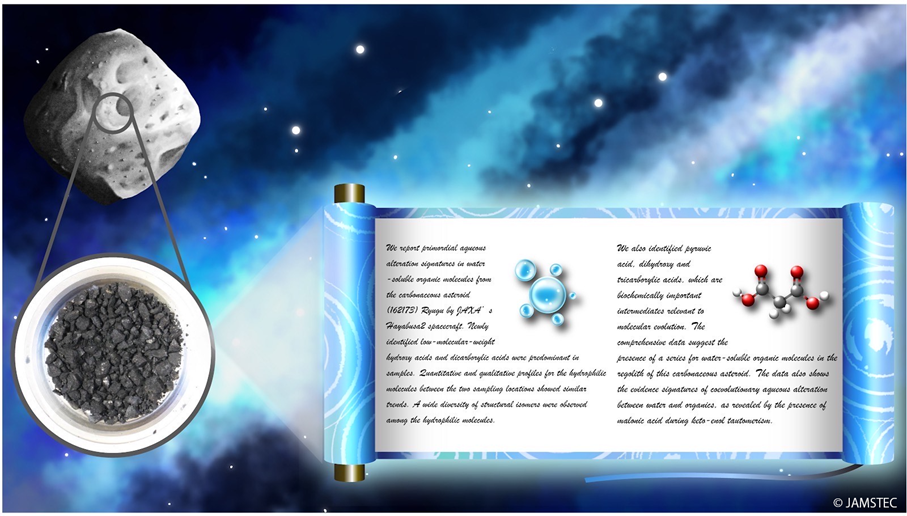
Asteroid Ryugu was once a parent body rich in water (H2O) and has been repeatedly frozen/thawed during its evolution in the solar system. By analyzing soluble components with high precision, we found conclusive evidence of “aqueous alteration” recorded in hydrophilic organic molecules. A total of 84 new species (including structural isomers) of organic acids (65 newly identified species including oxalic acid, malonic acid, citric acid, malic acid, pyruvic acid, lactic acid, and mevalonic acid) and nitrogen-containing molecules (19 new organic-inorganic complexes including alkylureas) with high affinity to water were discovered. It is believed that the primary molecular evolution involving water-organic-mineral interactions is still underway.
For more information, please refer to the following
Graduate School of Science web: https://www.s.u-tokyo.ac.jp/en/press/10423/
Publication URL: https://www.nature.com/articles/s41467-024-49237-6

